Norfolk
Explore hidden histories, historic photos, and things you never knew about Norfolk from the collections and archives of Historic England.
Discover your local listed buildings and places
Introducing some of Norfolk's most historic sites, included in the National Heritage List for England. Some of these captions have been summarised by AI. Click through for the official List entry. Skip this section and go to place by numbers
Northwold Manor
Northwold
A manor house constructed in phases with fabric dating from the C16-C19 and with some C21 additions. Read the official list entry to find out more.
Bromholm Priory ruins
Bacton
C12 and C13 ruins of a Cluniac priory founded in 1113. Read the official list entry to find out more.
Hunstanton Hall
Old Hunstanton
Hunstanton Hall, built by the Le Strange family with origins in the 15th century, features moated gardens and deer park expansion and underwent various restorations after fires in 1853 and...
Customs House including north bank of Purfleet Quay
King's Lynn
Customs House built in 1683 to the designs of Henry Bell. Read the official list entry to find out more.
Gunton Park
Antingham
Gunton Park hosts a 19th-century garden within a large estate historically owned by the Harbord family. Notable figures involved include William Teulon, Samuel Wyatt, and Humphry Repton.
Beeston Hall
Ashmanhaugh
Beeston Hall is a late 18th-century Gothic-style flint house surrounded by a park designed by Nathaniel Richmond, retaining historical connections to the Preston family and Humphry Repton.
Happisburgh Manor
Happisburgh
Happisburgh Manor, designed by Detmar Blow in 1900, is an Arts and Crafts garden and house, passed through various owners and uses, now remaining in private ownership.
Stiffkey Old Hall
Stiffkey
Stiffkey Old Hall, constructed in the late 16th century by Sir Nicholas Bacon, retains its historical gardens and structures, with restoration activities documented until the 1990s.
Pickenham Hall
South Pickenham
Pickenham Hall, located in Norfolk, features Arts and Crafts gardens designed by Robert Weir Schultz, and a Neo-Georgian two-storey building acclaimed for its cultural significance.
Catton Hall
Old Catton
Catton Hall, a late 18th-century mansion, was landscaped by Humphry Repton as his first commission. The estate has historical ties and has undergone various ownership changes.
Elmham House
North Elmham
Elmham House features a mid-18th-century park, extended in subsequent centuries, with structures like Elmham Hall, gardens, and a vineyard, demonstrating historical evolutions and land...
Cromer Hall including adjoining stables
Cromer
Cromer Hall, rebuilt in 1829, is a Tudor Gothic mansion with distinctive flint and limestone design, featuring embattled parapets, Gothic windows, and prominent octagonal chimneys.
Sandringham House
Sandringham
Sandringham House, owned by Queen Elizabeth II, was developed by Edward, Prince of Wales.
St Ann's House, 14, 16 and 18 St Ann's Street, and attach…
King's Lynn
House built in the early C17 and enlarged and modernised in the late C18 or C19. Read the official list entry to find out more.
Former Dominican Friary (Blackfriars) Norwich: St Andrew'…
Norwich
Former friary, originally constructed by the Friars Penitential in the C13 but largely rebuilt by the Dominicans in the C14 and C15.
Oxburgh Hall
Oxborough
Oxburgh Hall is a fortified country house with medieval origins and notable refurbishments by J.C. Buckler and Augustus Pugin in the 18th and 19th centuries.
Oakleigh House
Swaffham
House, formerly a farmhouse, built in the early-C17, refronted in the 1750s, converted to a headteacher's house in around 1945 and a sixth-form centre in 1974, both for Hamond's Grammar...
Gasholder Number 172 at former Great Yarmouth Gasworks
Great Yarmouth
Gasholder, built in 1884 to the design of the consulting engineer Robert P Spice of London for the Great Yarmouth Gas Company by the contractors Samuel Cutler and Sons of Millwall, London.
The Old Vicarage
Methwold
The Old Vicarage is a historically significant 15th-century timber-framed house with a 16th-century brick gable and an intricate octagonal chimney.
Lynford Hall
Lynford
Designed in the mid-1860s, Lynford Hall features formal gardens by William Burns and a Japanese water garden, surrounded by C18 expanded parkland.
Roman Catholic Chapel at Earlham Cemetery
Norwich
A small cemetery chapel, built in 1874 to the designs of the Norwich architect John Bond Pearce as part of an extension to Earlham cemetery in Norwich to serve the Roman Catholic community.
The Winter Gardens
Great Yarmouth
Winter gardens, designed and constructed in Torquay by John Watson and William Harvey between 1878 and 1881 at a cost of £12,783, relocated to Great Yarmouth in 1904.
Blickling Hall
Blickling
Blickling Hall, a 17th-century moated country house in Norfolk, features extensive gardens redesigned in the 19th and 20th centuries, with influences from figures like Norah Lindsay.
Sainsbury Centre, attached walkway, underground loading b…
Norwich
The Sainsbury Centre gallery and study centre, erected in 1977. Read the official list entry to find out more.
Venta Icenorum: Roman town and associated prehistoric, An…
Caistor St. Edmund and Bixley
Roman town and associated prehistoric and medieval remains, and Anglo-Saxon cemetery. Read the official list entry to find out more.
The Pleasaunce, Overstrand
Overstrand
The Pleasaunce, an early 20th-century Arts and Crafts garden by Edwin Lutyens, served as a holiday residence for Lord and Lady Battersea, now a Christian holiday center.
Attleborough Railway Station
Attleborough
Railway Station built in 1845 for the Norfolk Railway, comprising booking office, waiting room and Station Master's house, with signal box added in 1883.
The Scenic Railway Roller Coaster at Great Yarmouth Pleas…
Great Yarmouth
Scenic railway roller coaster of 1928, by Erich Heidrich, opening at Great Yarmouth in 1932. Maintenance sheds, the children's ride and the monorail ride are not included in the listing.
A pair of Tett Turrets
Docking
A linked pair of Tett Turrets, small Second World War military structures set partially below ground and designed to provide a protected gun position for a single occupant.
Intwood Hall
Keswick and Intwood
Intwood Hall is a 19th-century Jacobethan country house featuring historic gardens and parkland, originally built in the 16th century by Sir Richard Gresham.
Heydon Hall
Heydon
Heydon Hall, built in the 1580s by Henry Dynne, includes 19th-century formal gardens and a landscape park developed over centuries, embodying rich historical transitions.
Lattice House
King's Lynn
Timber-framed house, built around 1480 as a single range fronting Chapel Street, with two cross-wings added in the late C15 and early C16, and extended to the rear in the C19 and late C20,...
The Seagull
5 km off Horsey Gap, near Great Yarmouth, Norfolk.
The Seagull is a rare example of a sail-assisted paddle steamer (a type of vessel that became obsolete in the mid-C19 century with the development of screw propeller driven vessels) built in...
The Never Turn Back public house
Caister-on-Sea
A public house in Caister-on-Sea, Norfolk, completed in 1956 and opened in 1957, designed by A W Ecclestone for Lacon's Brewery. Read the official list entry to find out more.
The South Gate, King's Lynn
King's Lynn
The South Gate was built as part of the town defences, and was the main entry to the town of King's Lynn. Built in 1437 by Robert Hertanger in brick, with stone façade and dressings.
Wolterton Hall
Erpingham
Wolterton Hall, designed by Thomas Ripley and associates in the 18th century, features historic landscapes and gardens modified over centuries with contributions from prominent figures like...
Melton Constable Hall
Briningham
Melton Constable Hall features a 17th-century country house with a formal terraced garden, walled garden, and a park landscaped by Lancelot Brown.
Rainthorpe Hall
Flordon
Rainthorpe Hall is a 16th-century mansion in Norfolk with historical ties to the Appleyard, Chapman, and Baxter families.
Explore more
Search for more listed placesNorfolk through time
This timeline shows the first period of use for buildings and places on the National Heritage List for England, just one of the details recorded for every list entry. Click around to see how Norfolk changes over time. Skip this section and go to aerial photos
Prehistoric Before AD 43
Prehistory covers a million years of human occupation before the Roman invasion and the introduction of writing. Primarily hunter-gatherers of several human species including Neanderthals, the peoples moved across Europe, hunting animals, exchanging ideas and developing complex culture and belief systems including burial rites and astronomical understanding, as at Stonehenge for example.
Roman AD 43 to AD 410
Britain was invaded by four legions of the Roman army in AD 43, who relatively rapidly conquered England from landing points in Kent. Parts of Wales and Scotland soon followed.
Roman culture brought urbanism, monumental buildings, wide-ranging religious beliefs, writing, and strong social hierarchy. The Roman administrative system was withdrawn in AD 410.
Early medieval AD 410 to AD 1066
This period, often associated in England with Anglo-Saxons and Vikings, saw a reduction in urban living from the Roman period and increased migration from northern Europe.
Traces of this period can be found in cemeteries, particularly in artefacts and in some of the very early churches, as this period also saw the growth of Christianity in Britain.
Medieval AD 1066 to AD 1540
This period, sometimes known as the Middle Ages, began with the Norman invasion in AD 1066. It saw a significant rise in military and defensive buildings such as castles and earthworks, as well as religious houses dominating a largely agricultural landscape.
The monarchy and Church dominated the period, which also saw the break with the Roman Catholic Church and the English reformation.
Post medieval AD 1540 to AD 1901
The Post-Medieval period brought seismic changes to life in England, with religious reformation leading to the democratization of worship and the destruction of hundreds of religious houses.
In parallel, there was a huge expansion of scientific study and enlightenment that permanently altered the nation's social structure and landscape. Industrialization and mass production lead to wider global trade, emigration, and immigration.
20th century AD 1901 to AD 2000
The 20th century saw an incredible expansion of England's transport networks, with suburban growth shadowing rapid infrastructural expansion. The establishment of state schools, hospitals, and modern technical colleges, with new architectural styles, radically changed the appearance of towns and cities.
Two catastrophic world wars and the 1918 pandemic also brought unprecedented change, altering England's built environment and social structures forever.
Prehistoric Before AD 43
Prehistory covers a million years of human occupation before the Roman invasion and the introduction of writing. Primarily hunter-gatherers of several human species including Neanderthals, the peoples moved across Europe, hunting animals, exchanging ideas and developing complex culture and belief systems including burial rites and astronomical understanding, as at Stonehenge for example.
Roman AD 43 to AD 410
Britain was invaded by four legions of the Roman army in AD 43, who relatively rapidly conquered England from landing points in Kent. Parts of Wales and Scotland soon followed.
Roman culture brought urbanism, monumental buildings, wide-ranging religious beliefs, writing, and strong social hierarchy. The Roman administrative system was withdrawn in AD 410.
Early medieval AD 410 to AD 1066
This period, often associated in England with Anglo-Saxons and Vikings, saw a reduction in urban living from the Roman period and increased migration from northern Europe.
Traces of this period can be found in cemeteries, particularly in artefacts and in some of the very early churches, as this period also saw the growth of Christianity in Britain.
Medieval AD 1066 to AD 1540
This period, sometimes known as the Middle Ages, began with the Norman invasion in AD 1066. It saw a significant rise in military and defensive buildings such as castles and earthworks, as well as religious houses dominating a largely agricultural landscape.
The monarchy and Church dominated the period, which also saw the break with the Roman Catholic Church and the English reformation.
Post medieval AD 1540 to AD 1901
The Post-Medieval period brought seismic changes to life in England, with religious reformation leading to the democratization of worship and the destruction of hundreds of religious houses.
In parallel, there was a huge expansion of scientific study and enlightenment that permanently altered the nation's social structure and landscape. Industrialization and mass production lead to wider global trade, emigration, and immigration.
20th century AD 1901 to AD 2000
The 20th century saw an incredible expansion of England's transport networks, with suburban growth shadowing rapid infrastructural expansion. The establishment of state schools, hospitals, and modern technical colleges, with new architectural styles, radically changed the appearance of towns and cities.
Two catastrophic world wars and the 1918 pandemic also brought unprecedented change, altering England's built environment and social structures forever.
Aerial photos of Norfolk
Aerial photography helps reveal secrets of England's changing landscapes that are impossible to see from the ground. Skip this section and go to archive images

Fakenham
Thorpland Hall, Fakenham, 1952
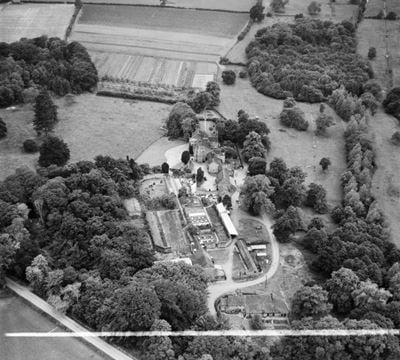
Fakenham
Thorpland Hall, Fakenham, 1952
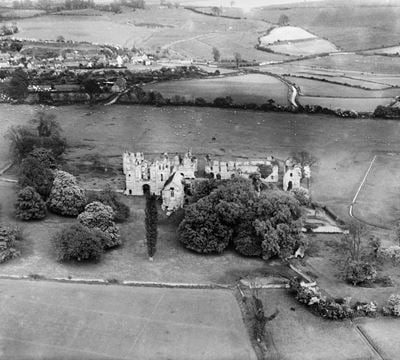
Castle Acre
Castle Acre Priory, Castle Acre, 1928
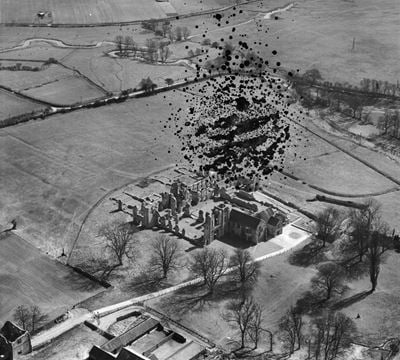
Castle Acre
The remains of the Priory, Castle Acre, 1948

Norwich
The Sexton, Son and Everard Ltd Shoe Manufactory (St Mary's Works) and the surrounding area, Norwich, 1946
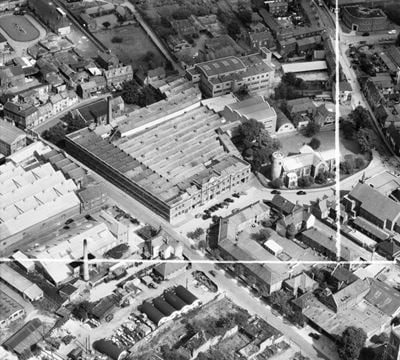
Norwich
The Sexton, Son & Everard Ltd St Mary's Shoe Works alongside St Mary's Church, Norwich, 1953

Castle Acre
The Castle, Castle Acre, 1948
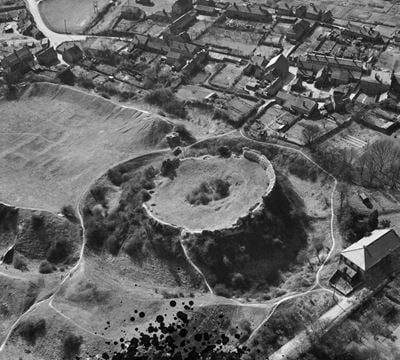
Castle Acre
The Castle, Castle Acre, 1948
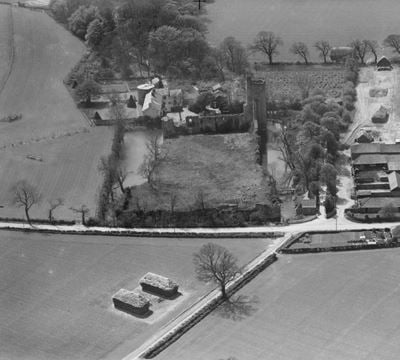
West Caister
Caister Castle, West Caister, 1947
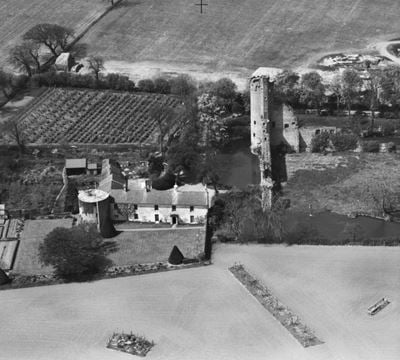
West Caister
Caister Castle, West Caister, 1947
Norfolk in the Historic England Archive
The Historic England Archive cares for over 15 million images, dating from the 1850s to the present day. Discover stunning images of Norfolk's past. Skip this section and go to stories about heritage
Charles George Harper Collection
Breckland, Norfolk
Date created: 1892 - 1933
A view from the south looking up the lane towards St Andrew's Church, showing the building through the trees
Eileen ‘Dusty’ Deste Collection
Great Yarmouth, Norfolk
Date created: 1966 - 1971
A view looking south east across Church Plain towards the Fishermen's Hospital Almshouses
Eric de Mare
Norwich, Norfolk
Date created: 1956
Exterior view of the Bullard's Anchor Brewery on Coslany Street in Norwich from the street.
John Gay Collection: London
Sandringham Park, King'S Lynn And West Norfolk, Norfolk
Date created: 1950 - 1975
An informal portrait of a gentleman in hunting attire leaning on a tall walking stick in the grounds of the Sandringham Estate, Norfolk, with two dogs...
John Gay Collection: Rural Life
Toftwood, Breckland, Norfolk
Date created: 1956
A pig emerging from a brick pigsty at Wood Farm
John Gay Collection: Counties
King'S Lynn And West Norfolk, Norfolk
Date created: 1956
A group of children watching a boy jumping from Hilgay Bridge into the River Wissey
John Laing Collection
King'S Lynn And West Norfolk, Norfolk
Date created: 25 Sep 1969
Concrete being unloaded from discharge skips on a monorail system on the working platform during the construction of silo no.
London, Midland and Scottish Railway Company
King'S Lynn And West Norfolk, Norfolk
Date created: 06 Jul 1920 - 10 Jul 1920
A view showing the remains of the west front of the priory church and the northern end of the Prior's House at Castle Acre Priory
Nigel Temple Collection of Postcards of Parks and Gardens
Fritton, Great Yarmouth, Norfolk
Date created: 1900 - 1930
GENERAL VIEW IN THE GARDENS
Walter Scott
Thetford, Breckland, Norfolk
Date created: 1957
A view looking north-west along King Street
John Laing Collection
King'S Lynn And West Norfolk, Norfolk
Date created: 25 Sep 1969
A view looking towards sugar silos being constructed at Wissington Sugar Factory, from the top of the conveyor bridge between the unloading area and...
Stories about heritage in your local area
Historic England publishes news, blogs, research, videos, and podcasts celebrating England's rich heritage. Discover the stories we have about Norfolk. Skip this section and go to education
12 Places Connected to Queen Elizabeth I
Mentions Church of St Margaret
Discover the locations where Queen Elizabeth I lived and visited, including Hampton Court Palace, Hatfield House and Kenilworth Castle.
The Rise and Fall of Anne Boleyn in 12 Historic Places
Mentions Blickling Hall
Discover the locations where Anne Boleyn lived, including Hever Castle, the Tower of London, and Hampton Court Palace.
The Timeless Charm of English Market Towns and Halls
Mentions Town Hall
Discover the history of English market towns and halls, including farmers' markets, Christmas markets, market squares and corn exchanges.
16 Historic Gardens and Landscapes to Visit
Mentions Holkham Hall
Try these English gardens if you’re looking for somewhere with spectacular garden scenery.
5 Art Nouveau Buildings in England
Mentions Royal Arcade
Explore some of England’s beautiful Art Nouveau buildings featuring flowing lines and floral designs.
The History of Ukrainians in England
Mentions Church of the Holy Trinity
Ukrainians have influenced several sites across England. Here is a small selection.
Women Architects Who Helped Shape England
Mentions Smithdon School Including Main Block, Water Tower, Workshops and Kitchens
Women have always influenced domestic design but it wasn’t until 1898 that the first female architect was admitted to the Royal Institute of British...
An Introduction to Quaker Meeting Houses
Mentions North Walsham Quaker Meeting House
The earliest Quaker meeting houses were distinctive for their simple, functional design; built by local craftsmen, they sit modestly in the landscape.
10 Places That Tell Stories of Isolation
Mentions Former Norwich Second World War IN-Station
Isolation and social distancing have shaped our past in many different ways.
Where to Find Egyptian Style Architecture in England
Mentions The Mausoleum
‘Egyptomania’ was the height of fashion in Regency England. Here are some of the places you can see its impact.
A Brief Introduction to Denys Lasdun
Mentions Norfolk Terrace and Attached Walkways, at the University of East Anglia
Discover the life and work of one of the most prominent post-war architects in England
A Brief Introduction to High-Tech Architecture
Mentions Sainsbury Centre, attached walkway, underground loading bay, and retaining walls to loading bay access road at the University of East Anglia
High Tech architecture used pipes, nuts, and bolts as decoration while also serving a practical purpose.
Mentions Norfolk
Milestones are a simple but powerful link to generations long gone.
Restoring Milestones Across Norfolk
Milestones are a simple but powerful link to generations long gone. Nigel Ford’s project to recover and restore hundreds of milestones across Norfolk is clear for everyone to see.
Grant Funding For Great Yarmouth Winter Gardens
Mentions The Winter Gardens, Norfolk
Historic England has awarded a £500,000 grant towards the restoration of the Grade II* listed Winter Gardens in Great Yarmouth, Norfolk.
Introduction to Issue 23
Mentions Norfolk
Claudia Kenyatta, Director of Regions, Introduces this issue on the theme of research into the heritage of England's High Streets.
Planting Trees for the Future Whilst Protecting the Past
Mentions Norfolk
Developing new datasets to ensure that the right tree is planted in the right place.
Research Reports Roundup February 2025
Mentions Norfolk
A roundup of the latest additions to our research reports database from October 2024 to February 2025, arranged by theme.
From Pixels to Pasts: Uncovering the Value of Shipwrecks Through Social Media
Mentions Norfolk
A new study examines how social media platforms can illuminate the social values of shipwreck heritage.
Grant for the Roman Catholic Cathedral of St John the Baptist in Norwich
Mentions Roman Catholic Cathedral of St John the Baptist
Historic England has awarded a grant of £57,000 to support vital conservation work and secure the landmark's long-term future.
30 New Projects Explore England’s Rural and CoastalWorking-Class Heritage
Mentions Norfolk
Funded by Historic England's Everyday Heritage grants programme, these projects will explore untold stories and celebrate the heart of our history.
The Cedars North, Walsham, Norfolk
Mentions The Cedars, 1a and 3 New Road, Norfolk
Investigating the journey of a building from Georgian residence to council offices.
Norfolk Broads Waterside Buildings Listed
Mentions Dutch Tutch and associated outbuilding, Towerview, The Eel Sett
5 waterside buildings in the Broads National Park, Norfolk, have been listed at Grade II by DCMS on the advice of Historic England.
Great Yarmouth Heritage Linkworker Wins Heritage Social Prescribing Award 2024
Mentions Norfolk
The Historic England-funded social prescribing pilot project has won the first-ever Award for Best Heritage Social Prescribing Project.
Research Reports Roundup to February 2024
Mentions Norfolk
A roundup of new additions to the Historic England Research Reports database and a longer term overview of industrial heritage reports.
Thetford Forest Breckland Warrens Listed
Mentions The earthworks and buried remains of the western boundary banks of Thetford Warren,, Langford Warren Lodge (also called Ickburgh Lodge), Thetford Warren Lodge
The Department for Culture, Media and Sport has listed 5 Breckland warren and lodge sites in Thetford Forest on the advice of Historic England,
Norfolk's social history through photos
Over 10,000 images from the Historic England Archive have been specially selected and re-captioned for teachers, students, and anyone who wants to learn more about their local area. Skip this section and go to grant-aided places
World War One Pillbox, Johnsons Yacht Station, Haddiscoe, Norfolk
Period: World War One (1914 - 1919)
This World War One pillbox is built of concrete with steel doors. It was built around 1916.
World War One Pillbox, Johnsons Yacht Station, Haddiscoe, Norfolk
Wood Farm, Toftwood, Dereham, Norfolk
Period: 1950s (1950 - 1959)
Portrait of a teenage boy leaning on a bench stacked with milk churns at Wood Farm
Wood Farm, Toftwood, Dereham, Norfolk
Winter Gardens, Great Yarmouth, Norfolk
Period: Edwardian (1902 - 1913)
The Winter Gardens were brought to Great Yarmouth in 1903. They were originally built in Torquay between 1878-1881.
Winter Gardens, Great Yarmouth, Norfolk
Windmill, Mill Lane, Bircham, Norfolk
Period: Victorian (1837 - 1901)
This windmill was built in 1846. It is attached to a bakery and miller's house. It has the inscription "GH 1846". It stopped being used in c1920.
Windmill, Mill Lane, Bircham, Norfolk
Windmill, Horsey Staithe, Norfolk
Period: 1960s (1960 - 1969)
This mill was built in 1912 to replace a Victorian one.
Windmill, Horsey Staithe, Norfolk
Windmill, Great Yarmouth, Norfolk
Period: Victorian (1837 - 1901)
Looking towards an unidentified windmill with a man and some children in the foreground.
Windmill Cinema, Marine Parade, Great Yarmouth, Norfolk
Period: Edwardian (1902 - 1913)
The Windmill Cinema (formerly known as the Gem Cinema) was built in 1908 and designed by A. S. Hewitt.
Windmill Cinema, Marine Parade, Great Yarmouth, Norfolk
Tags
Wheelwright's Oven, The Green, East Walton, Norfolk
Period: Victorian (1837 - 1901)
The building was originally a wheelwright's oven. It was built in the mid 19th century. The oven could hold six iron tyres.
Wheelwright's Oven, The Green, East Walton, Norfolk
Visit grant-aided places near you
These places and buildings have been helped by Historic England's financial grants. Find historic places in your neighbourhood that you never knew existed! Please note that opening times may vary. Skip this section and go to related locations
St Michael Coslany, Oak Street
A large late medieval church with impressive Victorian flint and limestone flushwork, featuring a nave, chancel, two aisles, and two chapels.
Billingford Mill, Low Road
Billingford Windmill, located in Billingford near Diss, Norfolk, England, is a Grade II* listed brick tower mill.
St Peter Hungate Church, Princes Street
A Grade I listed former parish church, home to the Hungate Medieval Arts Museum in the center of Norwich, constructed around 1460.
Caston Village Cross, Village Green
Caston Village Cross is a well-preserved medieval standing cross that served various functions, including invoking saintly support, outdoor...
Redundant Church of St Mary the Less, Bury Road
A 12th-century redundant parish church with various later modifications.


